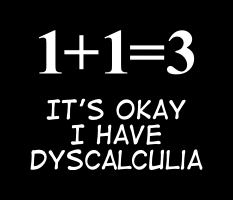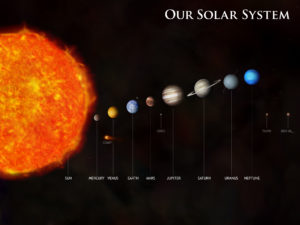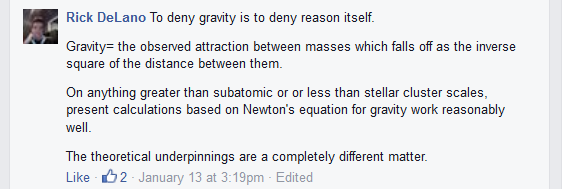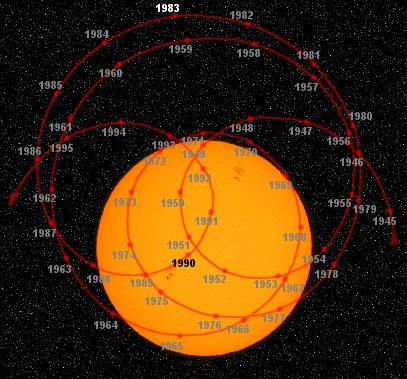
Wikipedia
In my article “St. Basil ‘Dogmatic’ on Geocentrism? Nope!” I note that the Church Father spoke of the Earth at the center of the universe not in dogmatic, theological terms, but in natural, Aristotelian terms. To the ancients the Earth was in the center not because it’s the most “significant”, but because they thought it was the heaviest body in the universe, a view we now know to be false through scientific investigation (see also “Geocentrists Peddling Alien Theology of Centrality”).
Countering this scientific conclusion, via an email to a broad group of people (posted on-line here), Bob Sungenis said, “One more thing I want you to see that [sic] will be astounding. It turns out that if we use the Compton and deBroglie wavelengths afforded to us by quantum mechanics, it turns out that the Earth is the heaviest object in the universe, just as Aristotle said.” He cited a section of Galileo Was Wrong in support of this incredible claim – there he endeavors to show how this “can be conceived using the parameters of modern science” (GWW, 9th ed., vol. 1, pp. 268-271).
Remember as we dissect this claim that Sungenis puts himself forward as a “physics major” and purports to be qualified to overthrow the entire world of physics and astrophysics. As such, it’s revealing that when he and his associates try to do actual physics the results are shot through with demonstrable misconceptions, oversights, contradictions, and outright math blunders (see many more examples in the articles linked at the end.)
This section of Galileo Was Wrong, penned with “help” from geocentrist Gerry Bouw, is no exception. Here are some of its serious problems:
- Sungenis and Bouw misuse the Compton wavelength and de Broglie wavelength equations in two different ways, both of which lead to nonsensical results.
- They twice miscalculate while doing basic math problems.
- They calculate an “effective mass” for the universe that is less than the “effective mass” of the Earth, yet the universe contains the Earth and everything else, so would presumably be more massive. They never question or explain this result.
- Sungenis specifically contends that somehow these findings make it possible for the Earth to be “the heaviest body in the universe” while failing to see that his own admissions in this section of GWW contradict that.
- Their bogus calculations lead them to conclude that the Earth and the sun have almost the same “effective mass”. This they trumpet as an incredible coincidence that “certainly didn’t happen by chance”. But they arbitrarily use a different way of arriving at the “wavelength” of Earth versus the “wavelength” of the sun and both ways are wrong, invalidating their mass calculations.
- They attribute nonsensical “effective mass” values to the Earth and sun without seeing or acknowledging the enormous discrepancy between these figures and the measured masses of those two objects.
Misusing the Equations

LinkedIn
The overriding problem with the whole analysis is that Sungenis and Bouw fundamentally misuse the Compton wavelength and de Broglie wavelength equations by plugging in parameters that have no place in those equations. By definition “The Compton wavelength of a particle is equivalent to the wavelength [λ] of a photon whose energy is the same as the rest-mass energy of the particle” (link). And the de Broglie wavelength “is the wavelength, λ, associated with a massive particle and is related to its momentum, p, through the Planck constant” (link). Thus by definition the Compton or de Broglie wavelengths of a particle or object have nothing to do with its diameter, much less the dimensions of its orbit around some other object. But that is precisely how Sungenis and Bouw have misused these equations, rendering their entire presentation fundamentally flawed at the outset. In line with the maxim garbage in, garbage out, their purported “effective masses” for the Earth, the sun, and the universe are nonsense. More on that below. Let’s take these blunders one at a time.
Miscalculating Using the Compton Wavelength Formula

Brookes Publishing
Early in this section of GWW, Sungenis states that “the Compton wavelength . . . for a baseball at rest it is 1.58 × 10–27 meters.” He doesn’t say where he got this figure, so one presumes that he tried to calculate it. But there’s a problem. The mass of a standard baseball is ~ 0.14 kilograms (link), so the calculation would be:
 Their answer is wrong by 14 orders of magnitude. It’s not a trivial error. One reader has likened it to waking up to find a hundred trillion dollars in your bank account, when you thought you only had one dollar in there. Dr. Tom Bridgman has noted that, for all their bravado about science and especially astrophysics, in the real world the neo-geocentric incompetence in math and physics would spell disaster: “Real lives depend on the proper computation of spacecraft trajectories, and not just the lives of astronauts . . . . The Geocentrists have offered nothing but rhetorical games to back their claims – nothing of the rigor required by science and engineering beyond a word game to relabel the mathematics” (link).
Their answer is wrong by 14 orders of magnitude. It’s not a trivial error. One reader has likened it to waking up to find a hundred trillion dollars in your bank account, when you thought you only had one dollar in there. Dr. Tom Bridgman has noted that, for all their bravado about science and especially astrophysics, in the real world the neo-geocentric incompetence in math and physics would spell disaster: “Real lives depend on the proper computation of spacecraft trajectories, and not just the lives of astronauts . . . . The Geocentrists have offered nothing but rhetorical games to back their claims – nothing of the rigor required by science and engineering beyond a word game to relabel the mathematics” (link).
The Earth the “heaviest body in the universe”? Not according to Sungenis’s own admissions:
 Sungenis agrees in this section that “the Compton wavelength for the tiny electron is 2.426 × 10–12 meters”. This is true, but then back-calculating for the mass of that electron we get 9.11 x 10–28 grams. (This is indeed the measured rest mass of an electron, which is where the calculated Compton wavelength of 2.426 × 10–12 meters came from.) But Sungenis appears not to have seen the significance of his own admission. He claims that the “effective mass” of the Earth is 3.86 x 10-46 grams. So even if Sungenis’s approach was valid it would mean that each and every electron has a mass 18 orders of magnitude greater than the supposed “heaviest body in the universe” Earth and 38 orders of magnitude greater than the entire universe. According to Sungenis’s own admission baseballs too would be much more massive than the Earth by many orders of magnitude. Clearly Sungenis didn’t think through the fact that his admission concerning the physical characteristics of electrons and baseballs renders nonsensical his contention that “scientifically speaking, Aristotle’s idea that the Earth is the heaviest body in the universe may actually be true.”
Sungenis agrees in this section that “the Compton wavelength for the tiny electron is 2.426 × 10–12 meters”. This is true, but then back-calculating for the mass of that electron we get 9.11 x 10–28 grams. (This is indeed the measured rest mass of an electron, which is where the calculated Compton wavelength of 2.426 × 10–12 meters came from.) But Sungenis appears not to have seen the significance of his own admission. He claims that the “effective mass” of the Earth is 3.86 x 10-46 grams. So even if Sungenis’s approach was valid it would mean that each and every electron has a mass 18 orders of magnitude greater than the supposed “heaviest body in the universe” Earth and 38 orders of magnitude greater than the entire universe. According to Sungenis’s own admission baseballs too would be much more massive than the Earth by many orders of magnitude. Clearly Sungenis didn’t think through the fact that his admission concerning the physical characteristics of electrons and baseballs renders nonsensical his contention that “scientifically speaking, Aristotle’s idea that the Earth is the heaviest body in the universe may actually be true.”
So how exactly can the Earth be more massive than the universe that contains it?
Sungenis comes up with an “effective mass” of the entire universe of 2.5 x 10-66 grams and for the Earth of 3.86 x 10-46 grams. From this he concludes that the Earth really is more massive than the whole universe and uses this to buttress his contention that the Earth is motionless: “This is analogous to comparing a 1 pound ball to a 10 trillion pound ball. Which is easier to move? Obviously the universe is much easier to move than the Earth. In fact, since the Earth’s effective mass is so exorbitantly greater than the universe, it would be absolutely impossible to move the Earth out of its place.”
 Right out of the chute we must notice that these numbers are absurdly small. The mass of a common penny is approximately 3 grams. Sungenis makes out that the Earth is 46 orders of magnitude less massive and the entire universe 66 orders of magnitude less massive than that single penny! Huh? But instead of considering that such nonsensical figures indicate that he blundered in his physics, Sungenis presents them straight-faced as the veritable “parameters of modern science”. Behold the expertise of Robert Sungenis, “physics major”.
Right out of the chute we must notice that these numbers are absurdly small. The mass of a common penny is approximately 3 grams. Sungenis makes out that the Earth is 46 orders of magnitude less massive and the entire universe 66 orders of magnitude less massive than that single penny! Huh? But instead of considering that such nonsensical figures indicate that he blundered in his physics, Sungenis presents them straight-faced as the veritable “parameters of modern science”. Behold the expertise of Robert Sungenis, “physics major”.
And nowhere does he address the obvious question: How could the Earth be more massive than the whole universe, which contains the Earth, plus everything else? One doesn’t have to be a physicist or even a pretend physicist to see that such calculations are bogus and such conclusions nonsensical – all it requires is a little common sense. [What is really happening here is that Sungenis has convinced himself that all of science is just a matter of personal interpretation – to use his words in this case, “It all depends on how one looks at it,” a remarkable statement from one who is constantly railing against relativity in any of its scientific expressions.]
The Compton wavelength equation has nothing to do with an object’s diameter:
For some unknown, unstated reason when Sungenis and Bouw attempt to calculate the “effective mass” of the Earth they simply assume that the Earth’s Compton wavelength is equivalent to its diameter, 1.287 x 104 kilometers (or 1.287 x 107 meters). But as we’ve already seen, the Compton wavelength calculation has nothing to do with a particle’s diameter. This fundamentally flawed use of this equation ends with invalid results, as one would expect.
Sungenis should have seen this problem based on his own admission. He said that the Compton wavelength of an official baseball is 1.58 × 10–27 meters (the correct value is 1.58 x 10-41 meters, as we saw above). But the physical diameter of a baseball is ~ 7.4 × 10–2 meters, many orders of magnitude larger. So obviously one can’t just plug the object’s diameter into the equation as if that somehow corresponds in any way to its Compton wavelength. (They do the same thing when they calculate the purported “effective mass” of the universe, plugging in the currently held observable diameter of 93 billion light years for its Compton wavelength, resulting in the invalid result of the entire universe being less massive than the Earth.)
Strangely, their error was right in front of them – it says right in the text of GWW that, “We see that the bigger the object, the smaller the wavelength.” This is true if by “bigger” one means more massive. But Sungenis and Bouw have done exactly the opposite – they would agree that the Earth is much more massive than a baseball or an electron, but they have assigned a Compton wavelength many orders of magnitude larger to the Earth. It should have been many orders of magnitude smaller, based on their own admission.
Going from wrong to more wrong:
 It was nonsensical enough for them to plug the diameter of the Earth as the wavelength into the Compton wavelength equation. There is no physical justification for that and it’s no wonder they came up with an incorrect answer. But when they turn to calculating the purported “effective mass” of the sun they plug in not the sun’s diameter, not even the diameter of the orbit between the Earth and sun, but the radius of the orbit between Earth and sun! They state that “λ [wavelength] must be the diameter of the sun-Earth distance (93 million miles or 1.5 x 1011 meters)” (note again that 93 million miles is the radius of the sun-Earth orbit). “Must be” why, exactly? No justification is given for this apparently arbitrary action, which breaks even with their own mangling of these formulae by plugging in the object’s diameter. From these twin bogus calculations they come up with “effective mass” numbers for the Earth and sun that are pretty close to each other (3.58 x 10-46 grams and 1.47 x 10-46 grams respectively) and conclude that there must be some significance. They trumpet this as an important new plank in their explanation of how the whole universe can go around the Earth while being centered on the sun, summing up that, “This certainly didn’t happen by chance”.
It was nonsensical enough for them to plug the diameter of the Earth as the wavelength into the Compton wavelength equation. There is no physical justification for that and it’s no wonder they came up with an incorrect answer. But when they turn to calculating the purported “effective mass” of the sun they plug in not the sun’s diameter, not even the diameter of the orbit between the Earth and sun, but the radius of the orbit between Earth and sun! They state that “λ [wavelength] must be the diameter of the sun-Earth distance (93 million miles or 1.5 x 1011 meters)” (note again that 93 million miles is the radius of the sun-Earth orbit). “Must be” why, exactly? No justification is given for this apparently arbitrary action, which breaks even with their own mangling of these formulae by plugging in the object’s diameter. From these twin bogus calculations they come up with “effective mass” numbers for the Earth and sun that are pretty close to each other (3.58 x 10-46 grams and 1.47 x 10-46 grams respectively) and conclude that there must be some significance. They trumpet this as an important new plank in their explanation of how the whole universe can go around the Earth while being centered on the sun, summing up that, “This certainly didn’t happen by chance”.
But sometimes a coincidence is just a coincidence and this is one of those times. The reason the numbers are the same order of magnitude is because the ratio between the Earth’s orbital speed (or as Sungenis would have it, the Sun’s orbital speed) and the speed of light (~10,000) is roughly the same as the ratio between the earth’s diameter and the radius of its orbit. These ratios approximately cancel out in the two equations, but they are physically unconnected. What Sungenis is doing is not physics, it’s numerology, that is, the “belief in the divine, mystical relationship between a number and one or more coinciding events” (link).
 But what makes this all the more odd is that just last year Sungenis glommed onto a Youtube video that purported to demonstrate that the sun is much less massive than the Earth. His immediate reaction was “nice find! This shows you what just two years of astrophysics can net you. What I find puzzling is why no one did this simple calculation before. It’s so simple it’s scary . . . I can’t find any flaw in this man’s logic or math”. But just a couple of days later Sungenis chimed in again with an about-face, “we did some checking on the Sun’s mass issue and the video turns out to be wrong, very wrong. . . . the mass of the Sun comes out very close to the accepted 10^30 kg (sic)” (see “The ‘Simple’ and ‘Scary’ Mindset of Robert Sungenis” and the follow-up article “Sungenis Followers Double Down”.)
But what makes this all the more odd is that just last year Sungenis glommed onto a Youtube video that purported to demonstrate that the sun is much less massive than the Earth. His immediate reaction was “nice find! This shows you what just two years of astrophysics can net you. What I find puzzling is why no one did this simple calculation before. It’s so simple it’s scary . . . I can’t find any flaw in this man’s logic or math”. But just a couple of days later Sungenis chimed in again with an about-face, “we did some checking on the Sun’s mass issue and the video turns out to be wrong, very wrong. . . . the mass of the Sun comes out very close to the accepted 10^30 kg (sic)” (see “The ‘Simple’ and ‘Scary’ Mindset of Robert Sungenis” and the follow-up article “Sungenis Followers Double Down”.)
So within the space of just over a year Sungenis has publicly espoused three mutually-exclusive views:
- the sun is much less massive than the Earth
- the sun is much more massive than the Earth
- the masses of the sun and the Earth are equal.
I guess that’s what you call covering your bases.
Even showing their work, they get the wrong answer:
The whole enterprise has gone very wrong, but the wrongness extends yet again to basic math. Even when calculating the purported “effective mass” of the Earth, though they actually show their work, they get the math wrong. Their answer for the purported “effective mass” of the Earth is 3.86 x 10-46 grams. Here’s how they presented it in Galileo Was Wrong:

From GWW 9th ed, vol 1, p. 270

6BWritingPortolios
But they’ve made a math error. Run it on your own calculator – the correct answer to their equation is 1.71 x 10-46 grams. Even though they flubbed the math, this new answer will get them very excited because it is closer to their bogus calculation of the “effective mass” of the sun based on their misapplication of the de Broglie wavelength equation. From that they got an “effective mass” of the sun of 1.47 x 10-46 grams and had to come up with some explanation for the discrepancy for the difference between 3.86 and 1.47.
And Sungenis gets the physics wrong, again….
Sungenis concludes from this that, “since the effective masses of the sun and Earth are almost identical, it means the sun and Earth are perfectly balanced, and consequently, the sun can travel effortlessly around the fixed Earth”. And yet again he’s gotten the physics wrong. Two bodies of approximately equal mass will orbit a common center of mass that is approximately midway between them, not one of them orbiting while the other is “fixed”. So even if Sungenis’s numbers were right (which they’re not), his physics is wrong.

Chandra X-Ray Observatory
But when they see that the real answer is 1.71 x 10-46 grams, so tantalizingly close to their other number of 1.47 x 10-46 grams, I predict that neo-geocentrists will, a) ignore that their handling of these equation remains completely bogus, thus these numbers are nonsense, b) fluff off the fact that they flubbed the most simple math, c) set aside that they botched the physics. Then they’ll double down. They will now insist that this really, really, really is not just a coincidence, because hanging onto this “coincidence” is important to them. They’ve staked part of their system on it. Here’s what they say: “The coincidence of these numbers means several important things. First, since the effective masses of the sun and Earth are almost identical, it means the sun and Earth are perfectly balanced and consequently, the sun can travel effortlessly around the fixed Earth. . . . Second, having the sun and Earth in balance allows the distance between them to serve as the pivot point for the rest of the universe…”
Yet, even if they had simply been consistent with themselves they would have plugged in the diameter of the sun and gotten a (still bogus) “effective mass” of 1.59 x 10-48 grams, two orders of magnitude off from their equally bogus “effective mass” of the Earth, enough to destroy their “coincidence”. But all of this is moot. Reality stubbornly refuses to bend to the whims of the geocentrists. The measured masses of Earth and sun are wildly different from their purported “calculated” values.
“Calculated” versus measured mass:
And so to round out this comedy of errors, they should immediately have seen that their “calculated” values of 3.86 x 10–46 grams for the effective mass of the Earth and 1.47 x 10-46 grams for the sun are nonsensical since the measured mass of the Earth is 5.972 × 1027 g and the measured mass of the Sun is 1.989 × 1033 g. In fact, Sungenis himself has even agreed to that figure for the sun’s mass (“The mass of the Sun is 1.98 x 10^30 kilograms”, he affirmed in his reply to Camille Carlisle, although he yet again went on to bungle the math: see “Elementary Physics Blunders in Sungenis’s Reply to Sky and Telescope’s Carlisle”).
Sungenis’s purported “effective masses” diverge from the measured values by 73 and 79 orders of magnitude respectively. We all know very well what Sungenis would have said about a real scientist who had a discrepancy this large between calculated and measure values. But he doesn’t apply the same standards to himself.
In Summary:
So to summarize, in this section of Galileo Was Wrong and Sungenis’s follow-up email we have:
- Fundamental misuse of the Compton and de Broglie wavelength equations, because:
- These equations have nothing to do with the diameter of an object.
- These equations have nothing to do with the diameter (let alone the radius) of one object’s orbit around another object.
- Two basic math errors.
- Failure to see that, according to their own methods, electrons and baseballs would be more massive than the Earth and even than the entire universe.
- Sungenis publicly espousing three mutually exclusive relationships of the masses of the Earth and sun – greater, less, and equal.
- Failure to see that the “coincidence” of their purported “effective mass” of the Earth and sun being almost equal is based on their compounded misuse of the wavelength equations, with their additional blunder of using the radius of the Earth-sun orbit as the supposed “wavelength” of the sun.
- Failure to see that their calculated “effective mass” numbers are wildly out of step with the measured masses of the Earth and sun.
Why dissect something so nonsensical at such length? Because when someone comes along claiming to be able to overthrow an entire scientific field and contradicts conclusions that have been held unanimously, for centuries, by physicists of all ideological persuasions, then demonstrated competence matters.
Yet again we find that despite all their bluster and bravado, these men are utterly incompetent in even the most basic physics. How many times do we need to see this repeated before we decide that these fellows literally don’t know what they’re talking about?
[see more on Sungenis’s alleged expertise in physics.]
See Also:
“Robert Sungenis, Physics Major?”
“Elementary Physics Blunders in Sungenis’s Reply to Sky and Telescope’s Camille Carlisle”
“Sungenis Botches the Math….Again!”
“Geocentrists Fail the Lagrange Point Challenge”
“Sungenis Fails the CMB Alignment Challenge….Twice”
“Geocentric Physics – Is That All You’ve Got?”
“Aether, Springs, and Light: Physics Blunders in Galileo Was Wrong”
“The ‘Simple’ and ‘Scary’ Mindset of Robert Sungenis”
“Sungenis Followers Double Down”
“Here Comes the Sun”
“There He Goes Again”
 That means that, even on the neo-geocentric view, the Earth must be in a gravitational relationship primarily with the Sun and secondarily with the moon and other planets.
That means that, even on the neo-geocentric view, the Earth must be in a gravitational relationship primarily with the Sun and secondarily with the moon and other planets.


















